Forth Valley Tourist Route: 20 Amazing Things To Do
The Forth Valley Tourist Route is a tour of discovery and follows the south bank of the Firth of Forth. It is one of the shortest road trip routes in Scotland, however, it is jam packed with great attractions.
This route features a whole list of world-renowned castles, palaces, ruins, sculptures and engineering firsts. This route includes two UNESCO heritage sites – the Forth Rail Bridge and Antonine Wall.
Also, you can view impressive metalwork called the Kelpies which is one of the largest equine sculptures you will find in the world. In addition, you can marvel at the magnificent Scottish engineering structure at The Falkirk Wheel.
Also, this route offers history and modernity as well as stunning sights along the Forth River. You will not be disappointed with the many fascinating castles and ruins as well as 21st-century engineering.
The route is 43 miles long and it may be one of the shortest trips in Scotland but it definitely has some of the best attractions in the country.
Accommodation
South Queensferry: Orocco Pier, Dakota Edinburgh, The Shore
Linlithgow: The Farmhouse at Williamscraig, The Queens View Luxury B&B, Alban
Grangemouth: The Grange Manor, Oxgang Kitchen, Bat & Rooms,
Falkirk: Ardtalla, Macdonald Inchyra Hotel & Spa, Wilsons Cottage
Stirling: Hillview Cottage, The Barn Lodge, Stirling Court Hotel
Supplies
South Queensferry: Scotts Bar & Restaurant, Tesco Superstore, The Railbridge Bistro
Bo’ness: Tesco Superstore
Linlithgow: ALDI, Tesco Superstore, Sainsbury’s, The Bridge Inn,
Grangemouth: Asda Grangemouth Superstore
Falkirk: Morrisons
Stirling: Molly Malones, JD Wetherspoon, Fletcher’s, Tesco Superstore
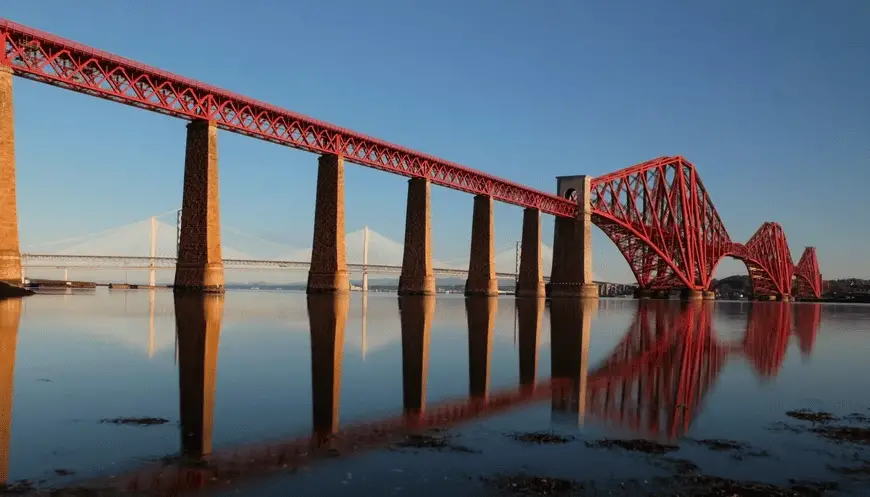
Forth Rail Bridge
The Forth Rail Bridge is a landmark of British engineering and is a large attraction on the Forth Valley Tourist Route. The bright structure is one of the most elegant bridges in the world.
Viewing the bridges from South Queensferry is stunning, especially during sunset or sunrise. Also, you can view the structure from North Queensferry or get a snapshot of the Queensferry Crossing and the Forth Road Bridge.
Also, you can visit the local shops at the bridges and see the Queensferry Museum learn about the extensive history of the bridges. In addition, you can book a book ride to visit Incholm Island, located under the bridge.
The island is an interesting place which is filled with wildlife including an array of birds. On the other side of the Forth Road Bridge is a long distance walking route which takes you round Fife – Fife Coastal Path.

Hopetoun House
Next, you can stop at the stately home and garden called Hopetoun House. The Forth Valley Tourist Route includes lots of historical attractions.
It is one of the finest gardens in Scotland and is an important part of European architectural heritage. Sir William Bruce and William Adam are the two famous architects who are responsible for designing Hopetoun House.
The Hopetoun House is a place of outstanding beauty and it was home to the Hope family since 1699. Also, the house is a familiar site to all Outlander fans and an Outlander location map is on-site so you can find all the sights.
The house is open to the public from Easter to the end of September.

Midhope Castle
Midhope Castle is believed to have been built in the late 15th century on private land on the Hopetoun Estate near the village of Abercorn.
There are a few restrictions to accessing the building, however, you can explore the castle from a distance. Midhope Castle is very well-known to Outlander fans as Midhope Castle is the main characters family home.
House of the Binn’s
Binn’s Grand House is a 17th-century country home with mass parklands which overlook the Firth of Forth. Visitors can explore the extensive grounds and walk one of the many way-marked trails.
Keep an eye out for the sheep, cattle and peafowl colony. The grounds are open all year around.
House of the Binn’s was home to the Dalyells for over 400 years. The present house was built in 1612 by Thomas Dalyell, an Edinburgh merchant who made his fortune at the court of King James VI and I in London.
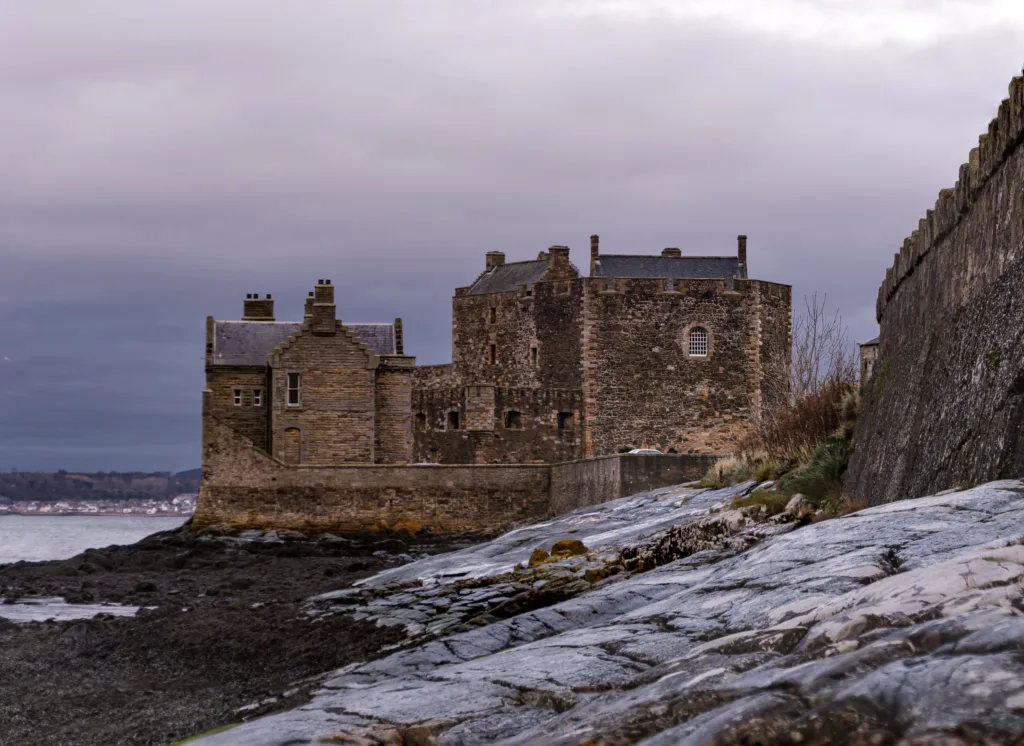
Blackness Castle
Blackness Castle is one of the most impressive fortresses in Scotland. It was built back in the 15th century and the castle has a thrilling history as a garrison fortress, with a royal residence and a depot for ammunition.
You may recognise the castle from a scene on Outlander. Also, the castle offers stunning views over the Firth of Forth and beyond.
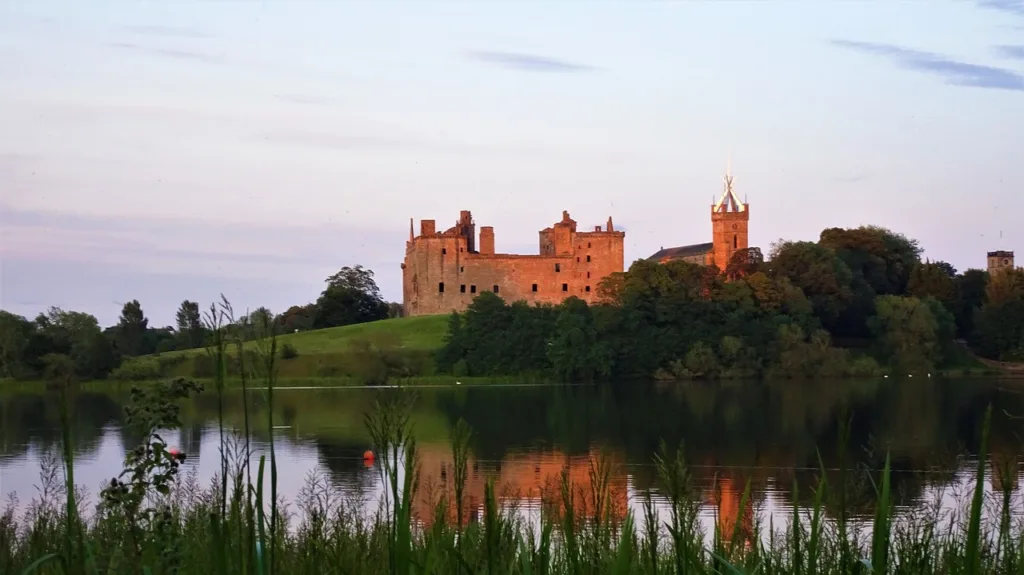
Linlithgow Palace
Linlithgow Palace is a 15th-century castle ruin which is located beside Linlithgow Loch. The walls of Linlithgow Palace have witnessed the births of the Mary Queen of Scots and James V.
Also, it has been a royal residence for Stuart kings and queens. However, now the castle lies in ruins but still stands strong on the shores.
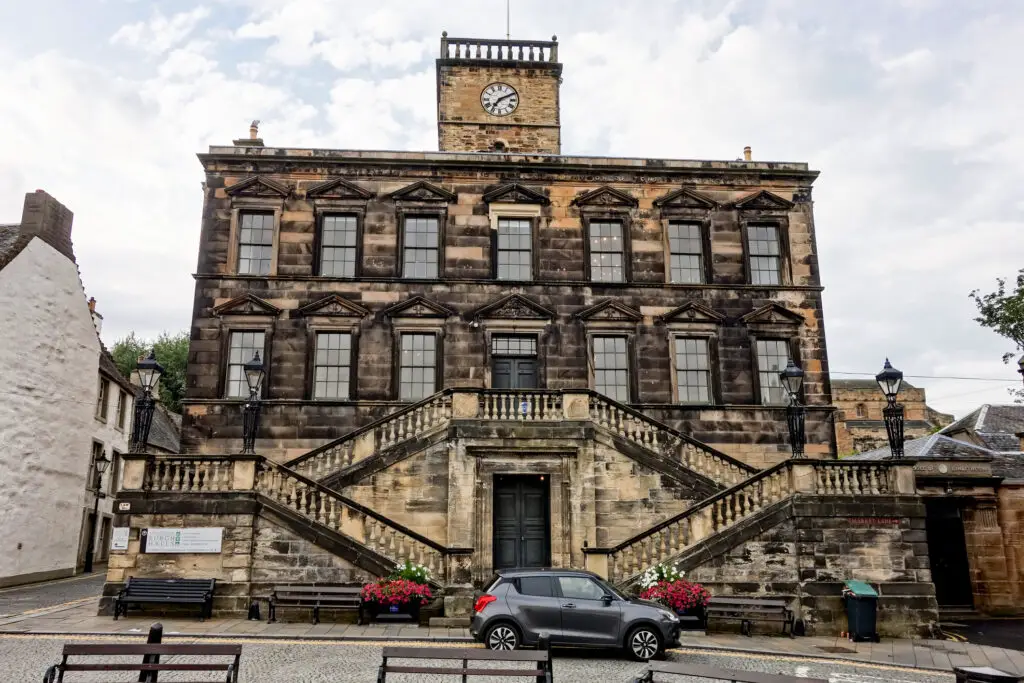
Linlithgow Burgh Halls
Burgh Halls is an iconic building which was built in the 17th century. The building houses a superb art gallery, contemporary function rooms and a stunning roof terrace for perfect weddings and other events.
There is a cafe with an outdoor patio and Rose Garden which is a great place to get a coffee.
Linlithgow Canal Centre
Linlithgow Canal Centre runs boat trips and canal cruises. The Canal Tearooms is a great place to relax and enjoy fresh baking and a hot drink.
Also, the former canal stable hosts the Canal Museum which has exhibits of records, photographs and artefacts associated with the Union Canal.
Moreover, there are displays which demonstrate the development of the British Canal System.
Bo’ness
Bo’ness is a coastal town located on the banks of the River Forth and is located on the Forth Valley Tourist Route.
Throughout the town, you will see glimpses of the Roman part as the town has been in existence since Roman times. Since the 18th century, the town has been a central place for the industry.
Bo’ness Motor Museum
There is a great choice of museums on the Forth Valley Tourist Route. The Bo’ness Motor Museum is a hidden gem where you will find cars, TVs and toys.
It is packed full of memorabilia including Harry Potter’s blue For Anglia and a couple of James Bond’s cars. The museum is only open on weekdays, entry is free and only takes an hour of your time to view.
The Scottish Railway Museum, Bo’ness & Kinneil Railway
Bo’ness and Kinneil Railway is a must for train buffs. At Bo’ness you can enjoy a tour of the Scottish Railways Museum and take a ride on the heritage railway line.
There are three stops where you can board the luxury train and explore the luxurious countryside. At the railway museum, you can enjoy the sights of the restored carriages and operate the signal points.
The museum opened in 1995 and displays train carriages from the late 1800s to 1963.
The Scottish Railway Museum is run by volunteers and the entry fee goes towards running the operations and future preservation of the steam railways.
Hippodrome Cinema
The Hippodrome Cinema is the oldest built-for-purpose cinema in Scotland. It was built in 1912 and is an A-listed building which features an art deco architectural design.
You can visit the cinema to watch film classics or new releases. Check out the Hippodrome Cinema website for schedules of more showings.
The cinema won awards for the ‘Best Cinema Experience’ and ‘Cinema of the Year’ in 2019. There is a screening every Saturday morning which shows a family’s favourite movie.
Also, family blockbusters, fascinating documentaries, thrillers or comedies are shown every Monday morning.
Kinneil Nature Reserve
This nature reserve was built on the site of old industrial ground and was transformed into a coastal parkland.
There are miles of new paths and acres of trees which stretch from Bo’ness Harbour to Snab Lane, you can also get on the Bo’ness and Kinneil Railway stop here.
The nature reserve used to be the site of Kinneil Colliery which was the last pit in town. Also, the area was home to local salt pans and Bo’ness Distillery.
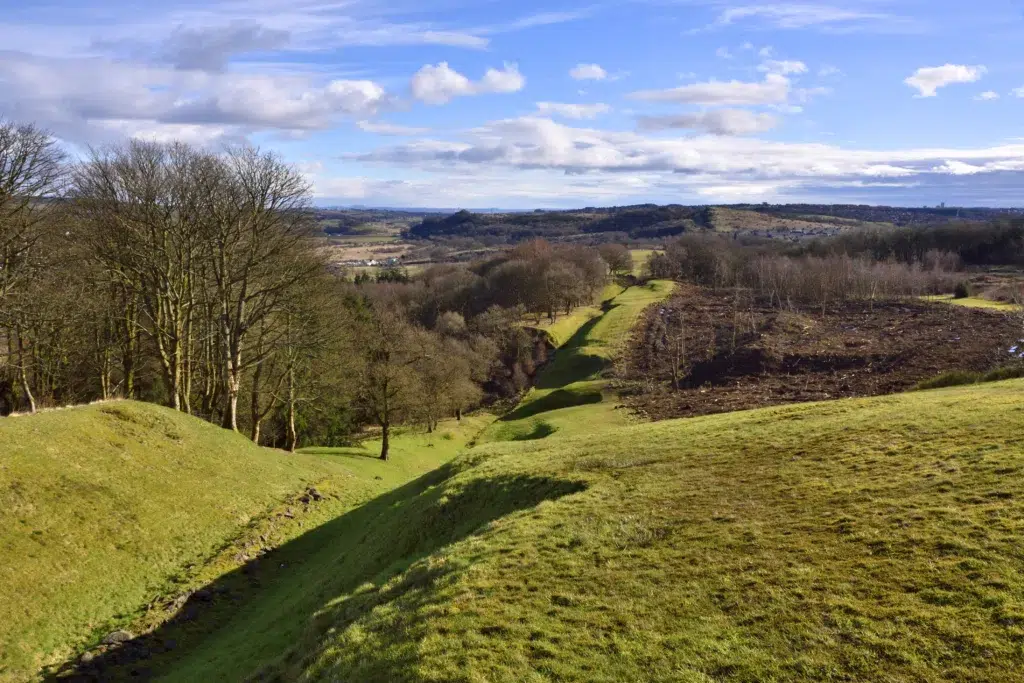
Kinneil Museum and Estate
Next on the list is the Kinneil Museum and Estate. At the museum, you can find a section of the Antonine Wall which dates back to the Roman era.
The 60 km structure holds the only surviving example of an Antonine fortlet. The museum is located in the Kinneils House stable block.
There are many historical characters that are linked to the Kinneil Estate including Antoninus Pius, James Watt, St Serf and Mary Queen of Scots.
Grangemouth
Grangemouth is a town which was originally known as Sealock, the town was established in the late 18th century.
Also, Grangemouth thrived as the link between the eastern end of the Forth & Clyde Canal and the River Forth.
There is a number of unique retailers in the town and several cute coffee shops. Also, the town is packed with local history and memorabilia.
Jupiter Urban Wildlife Centre
The Jupiter Urban Wildlife Centre is a green oasis in the middle of Grangemouth. The wildlife centre is built on old industrial land and plays a reminder of the past.
The area hosts a lot of activities and it has a wide array of native trees and wildflowers including Scots Pine and Rowan.
Falkirk
Falkirk is a town in Scotland’s central belt, located between Edinburgh and Glasgow in the Forth Valley.
There is a variety of outstanding attractions such as the Kelpies, the Helix, the Falkirk Wheel, Bo’ness and Kinneil Railway, Antonine Wall, Callendar Park and the John Muir Way.
Callendar Park
Callendar Park is a great place to visit if you wish to find a quiet place to relax. There are over 170 acres of land in Callender Park where you can spend the day wandering around the gardens or walking trails.
Callendar Park is home to an important section of a UNESCO heritage site – the Antonine Wall. Also, the impressive Georgian-style mansion, Callendar House is located in the park.
Moreover, the gorgeous parkland and woodlands are perfect locations for a golf course.
Callendar House
In Callender Park you can find the 14th-century Georgian-style mansion. The mansion has seen many rebellions, wars, and industrial revolutions.
There are exhibits inside the mansion which show the history of Callender House from the 11th to 19th centuries.
Also, you can visit the refurbished 19th-century kitchen to experience what the food was like back then and what it was like to live in the household at that time.
There is a newly refurbished tearoom which offers delicious scones and coffee. Entry to the house is free.
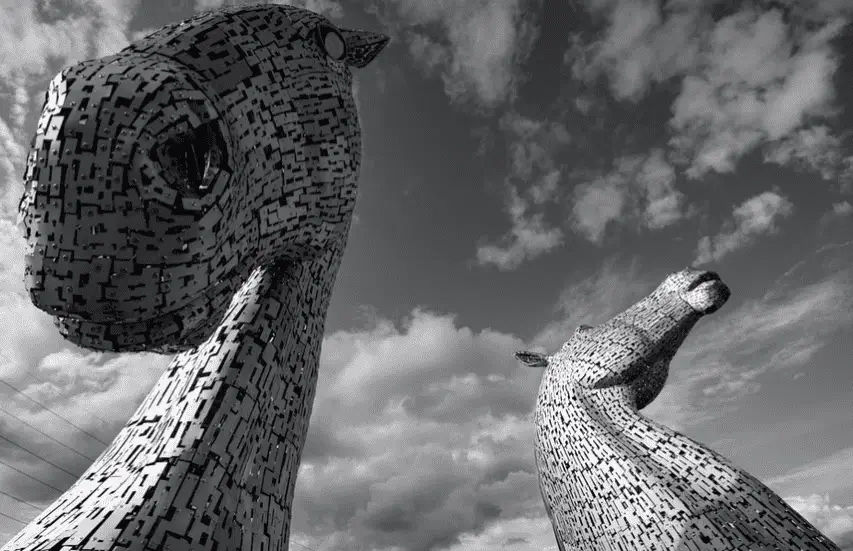
The Kelpies and Helix
The Kelpies are two 30-metre-high steel sculptures of mythological kelpies that stand extremely high in Helix Park. This is an iconic sculpture in Scotland and on the Forth Valley Tourist Route.
The sculptures are made from stainless steel by Andy Scott. The two enormous heads of the two horses are extremely hard to miss and can be seen for miles.
The Kelpies are known as the largest equine sculptures in the world. Located right next to the Forth and Clyde Canals, allows you to admire the reflections of the Kelpies in the water.
There are plenty of walking trails and cycle paths in the Helix. Also, you can enjoy the view of the horse-like heads from the cafe while you relax with a cuppa.
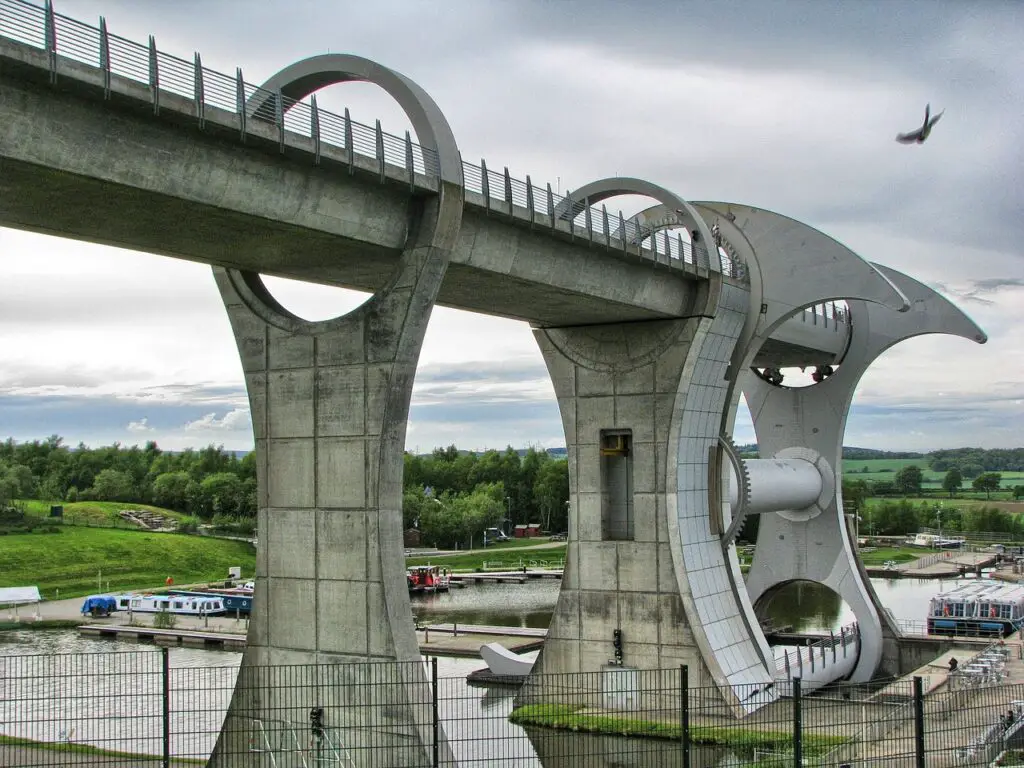
The Falkirk Wheel
The Falkirk Wheel is the world’s only rotating boat lift and it is a sight to be seen. The Falkirk Wheel was built in 2002, and it connects the Forth and Clyde Canal.
Also, you can go on the water in a pedalo or a boat. Or, you can enjoy canoeing, walking, cycling, playing in the water park and Segway rides.

Battle of Bannockburn
The site of the Battle of Bannockburn is where Robert the Bruce and his small army inflicted a resounding defeat on Edward II and his larger army in 1314.
Today, the site is home to one of the best visitor experiences in Scotland. At the centre, you can learn about Bruce’s battle strategy, dress in a battle costume or fight your own battle in 3D.
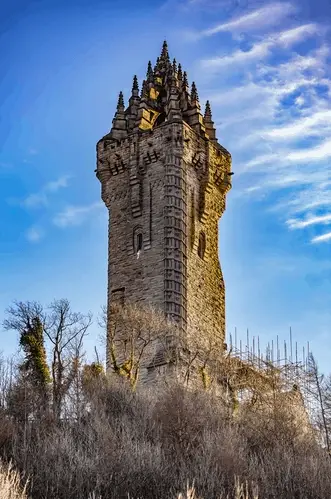
Stirling
The Forth Valley Tourist Route ends in Stirling, which is one of the loveliest towns in Scotland. Stirling Castle is a famous 16th-century castle which stands proudly at the top of the Ochil Hills.
Make sure to pay a visit to the Great Hall and Chapel Royal. Also, there is a gift shop and you can relax at the Unicorn Café.
You can visit many attractions which are below the castle including Kings Knot Gardens, Old Town Jail, Cowane’s Hospital, Church of Holy Rude, Mars Walk and Old Town Cemetery.
Cambuskenneth Abbey was built in 1140 and lies across the river. This is a hidden gem as it is not comparable to many other buildings in Scotland.
In the 19th century, the abbey was restored and now has been left to ruin.
Finally, at the National Wallace Monument, you can admire William Wallace’s Famous battle sword and then climb the final flight of stairs to the top.
Inside the monument, you can learn bout the Scottish patriot who led the Scottish Army to victory at The Battle of Stirling Bridge.
Final Note
The Forth Valley Tourist Route is a short but sweet route with many popular tourist attractions. This post is the ultimate travel guide to the Forth Valley Tourist Route.
The route has some of the best attractions in Scotland including the Kelpies, Falkirk Wheel, Blackness Castle, Antonine Wall, Linlithgow Castle and Forth Rail Bridge.
Also, the route may not have the sights of the remote highlands, the snowy peaks in the Cairngorms or the beaches of the islands, however, it is a great route to follow and learn about the history of the area.
There are many other tourist routes to explore in Scotland. Some of the most popular tourist routes are Argyll Coastal Route, Clyde Valley Tourist Route and Deeside Tourist Route.
